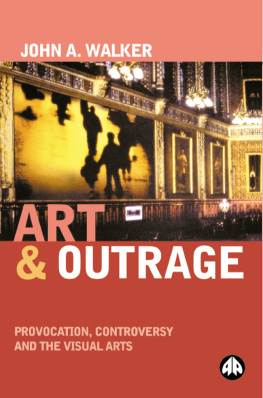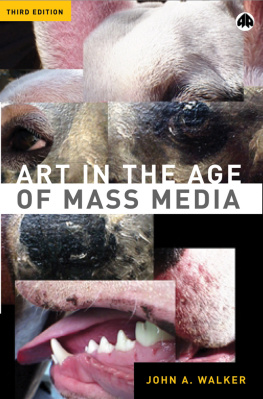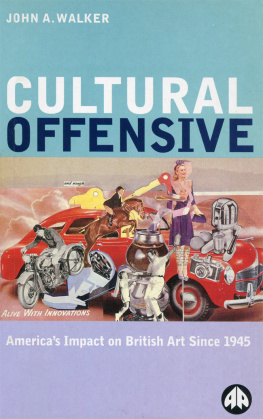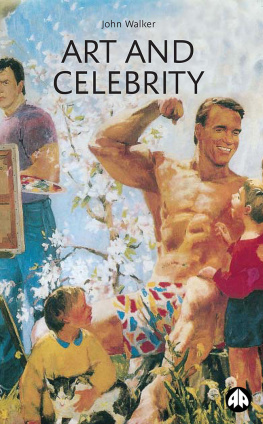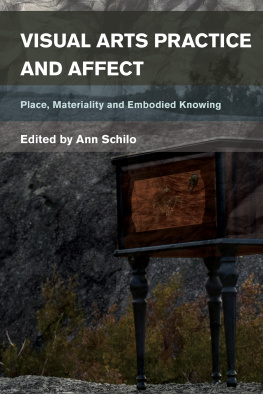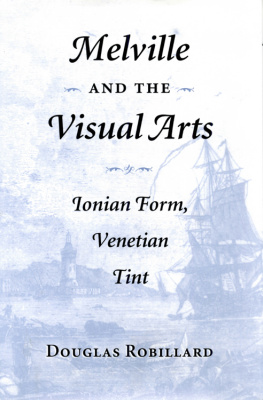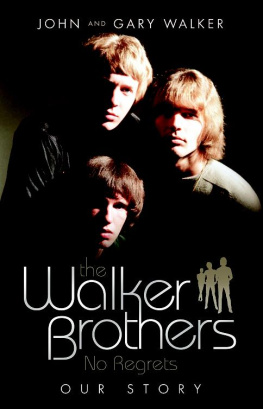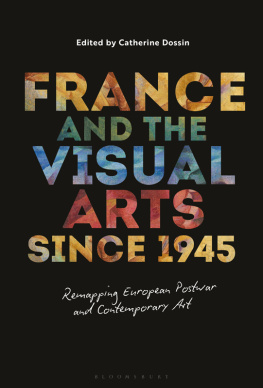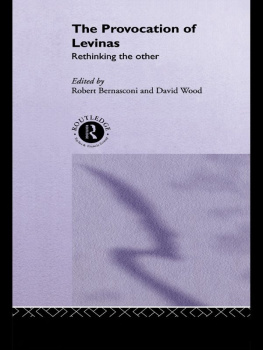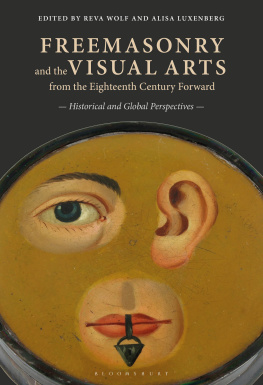First published 1999 by
PLUTO PRESS
345 Archway Road, London N6 5AA
Copyright John A. Walker 1999
The right of John A. Walker to be identified as the author of this work has been asserted by him in accordance with the Copyright, Designs and Patents Act 1988
British Library Cataloguing in Publication Data
A catalogue record for this book is available from the British Library
ISBN 978 0 7453 1354 2 Paperback
ISBN 978 1 7837 1877 1 PDF eBook
ISBN 978 1 7837 1822 1 ePub eBook
ISBN 978 1 7837 1823 8 Kindle eBook
Library of Congress Cataloging in Publication Data Walker, John Albert, 1938
Art and outrage : provocation, controversy and the visual arts / John A. Walker
p. cm.
Includes bibliographical references and index.
ISBN 0745313590 (hbk)
1. Arts, Modern20th centuryGreat BritainPublic opinion. 2. Public opinionGreat Britain. I. Title.
NX543.W345 1999
709.04007441dc21
98-29582
CIP
Designed, typeset and produced for Pluto Press by
Chase Production Services, Chadlington, OX7 3LN
Printed on Demand by CPI Antony Rowe, Eastbourne
Acknowledgements
I am grateful to Anne Beech and Robert Webb of Pluto Press for their encouragement and editorial skills, and to Middlesex University for research funds which have provided some relief from teaching duties and contributed towards the cost of illustrations.
A book of this kind is necessarily dependent upon the published writings of many newspaper and magazine journalists, art critics and historians. I would like to thank all those whose work I have consulted and used. Thanks are also due to the Artangel Trust, the Angela Flowers Gallery, Mark Ashton (of the Camden Local Studies and Archive Centre), Naomi Bache for the loan of her dissertation Can Art Still Shock? (Middlesex University, 1996), Bryan Biggs (of the Bluecoat Gallery, Liverpool), Jon Bird (of Middlesex University), Marianne Boesky (of Boesky & Calley Fine Arts, New York), Jenni Boswell-Jones, JoAnne Brooks (director of The Archives of J.S.G. Boggs), Barry Curtis (of Middlesex University), Katy Deepwell, Marianne Dickson (assistant keeper of the Ferens Art Gallery, Hull), Rose Frayn, Margaret Garlake, David Gear, Pamela Griffin (of the Hayward Gallery library), Peter Hagerty, Beth Houghton (head of the Tate Library and Archive), Jay Joplin (of the White Cube Gallery), London Animal Action, Kate Love, Norbert Lynton, Elisabeth McCrae (of the Lisson Gallery), Walter Macauley (chief librarian of the Belfast Telegraph, Daily Mail and The Evening News/Associated Newspapers Ltd), Derek Manley, Jayne Marsden (deputy chief librarian of the Yorkshire Post), Anne Massey, Ian Ritchie (of the National Portrait Gallery Archive), Steve Robb, Richard Sewell, Kate Smith, R. Schopen (of the PR department of Gateshead Metropolitan Borough Council), Express Newspapers PLC, the Hull Daily Mail, the Liverpool Post & Echo, the East Anglian Daily Times, Peter Sylveire, the staff of the Laing Art Gallery, Newcastle-upon-Tyne, Harriet Vyner, Tim Wilcox (of Manchester City Art Gallery), Simon Wilson and Lyndsey Morgan (of the Tate Gallery), Jennifer Wood (of the Imperial War Museum Art Department), and the Tampa Museum of Art, Florida.
I am grateful to the following artists and photographers for information and permission to reproduce their work: Conrad Atkinson, Alice Beberman/Chute, Anne Berg, J.S.G. Boggs, Sue Coe, Bill Drummond (of the K Foundation), Ian Hamilton Finlay, William Gear, William Green, Antony Gormley, Rick Gibson, Newton Harrison, Marcus Harvey, Anthony-Noel Kelly, Mary Kelly, John Latham, Leeds United, David Mach, Kippa Matthews, Gustav Metzger, Elizabeth Moore, Jacqueline Morreau, David Muscroft, Hermann Nitsch, Tony Rickaby, Rebecca Scott, Beverly Skinner, Monica Sj, Sam Taylor-Wood and Jamie Wagg.
Thanks also to Tim Marlow, editor of tate: the art magazine, for permission to reproduce my article about Marcus Harveys Myra painting. (The article has been slightly revised.)
While every effort has been made to trace the copyright owners of the illustrations, the author/publisher will be glad to hear from any we have not been able to contact.
In order to avoid the scholarly apparatus of references and footnotes in the examples, I have dispensed with footnote numbers and simply listed, in date of publication order, the sources of information at the end of the book.
Introduction
Shock in Modern Art
Before 1800 European artists may have set out to astonish, impress and please their patrons and others who viewed their work but the idea of shocking and outraging them would not have crossed their minds. In contrast, during the nineteenth century, French artists such as Czanne, Courbet, Daumier, Manet and Rodin managed to shock and offend conservative critics and the public with paintings, caricatures and sculptures that were radical in either form or content. The combination of an avant-garde ideology we artists lead the way and march ahead of public taste and a capitalist market in art in which artists competed against one another for sales, commissions, state approval and the attention of dealers, collectors and critics encouraged individualism and extremism.
There were times, however, when artists collaborated and formed self-help groups such as the Impressionists and the Nabis but these were also rival factions which sought to differentiate themselves by means of style and aesthetic philosophy. Market and other imperatives, therefore, put a premium on such values as difference, invention, experiment, originality, newness or novelty. By the early twentieth century harmonious, organic compositions were replaced by fragmented, inconsistent and dissonant compositions. In many instances, the traditional artistic value of beauty was replaced by cults of the primitive and the ugly witness Picassos Demoiselles dAvignon (1907). With Kandinsky, Malevich and Mondrian came abstract art, a type of visual sign many lay people found incomprehensible or meaningless.
Shock tactics were increasingly adopted by the radical artists who belonged to the avant-garde movements of the period 1900 to 1939, such as, for instance, by the Futurists, Dadaists, Vorticists and Surrealists. One of the most famous shock effects within Surrealism was the slicing of a womans eye (actually a dead cows eye) in


